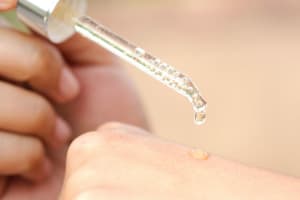
The Skinny
Gender confirmation surgery or gender reassignment surgery can be a major component of a transgender individual’s transition. There are numerous surgical procedures from head to toe for female to male (FTM) transgender patients. Plastic surgery procedures are usually used in unison with medical and hormone therapies being administered under the guidance of a healthcare provider. You can also consult our male to female (MTF) gender confirmation guide.
All individuals planning to undergo a gender confirmation or gender reassignment transition are evaluated for physical, emotional, and mental health. These evaluations are used to provide whole patient considerations and maintain standards of care for transgender health and gender dysphoria. Multiple international and national organizations exist to advocate, educate, and cultivate a transgender community. The World Professional Association for Transgender Health (WPATH), American society offshoot USPATH, and GLAAD are just a few of these institutions.
The Specifics
Who is a candidate for female to male gender confirmation surgeries?
Candidates for female to male (FTM) gender confirmation surgery are individuals identified as female at birth who are seeking to fully embody their authentic male gender identity. The decision to pursue medical and/or surgical treatments as part of a transition journey is entirely unique to each individual transgender person. Anyone considering a gender confirmation surgery should consider their overall health, expectations of the procedure, and ability to commit to recovery times prior to pursuing treatments.What can you expect from female to male gender confirmation surgeries?
FTM gender confirmation surgeries vary greatly depending on an individual transgender candidate’s needs. There are both surgical and non-surgical treatment options for gender reassignment.
Generally, surgical procedures are more involved, but also permanent, and will necessitate weeks to months of recovery. Non-surgical options usually provide less permanent results, but are also less invasive, and possibly changeable. Some hair procedures may take many months to years to achieve full, lasting results. Medical and hormone therapies may possibly affect surgical procedures. There use should be discussed with your providers.
When should you consider female to male gender confirmation surgeries?
The decision to pursue any gender confirmation surgery is unique to each individual transgender patient. Considerations for physical and mental health are important components in deciding the appropriate time to pursue procedures. Additionally, candidates concurrently utilizing medical and hormone therapies will need to discuss the timing of surgical procedures with their plastic surgeon and medical provider.
What is the youngest age someone can have female to male gender confirmation surgeries?
Guidelines for pediatric candidates (those under age 18) seeking to pursue gender affirming surgeries state transgender individuals should not undergo genital reconstruction procedures such as phalloplasty (penile construction), scrotoplasty (scrotum construction), vaginoplasty (labia, clitoris, and vaginal construction), oophorectomy (ovary removal), or hysterectomy (uterus removal) until they reach age 18.
Certain top FTM procedures may be considered at age 16. A consultation with a certified medical provider is necessary to determine the best timing of all gender affirming procedures and therapies. Additionally, parental consent and full physical and mental health evaluations are required.
Facial Masculinization Procedures
A combination of surgical and non-surgical procedures that address the forehead, hairline, nose, lips, cheeks, chin, neck, and more may be employed for facial masculinization.
Forehead Contouring & Hairline Advancement
Rhinoplasty
Cheek Augmentation
Lip Augmentation
Chin Surgery
Neck Procedures
Transmasculine Top Procedures
Breast removal and chest augmentation are the goals of transmasculine top procedures.
Transmasculine Bottom Procedures
Transmasuline bottom procedures can be used to remove female sex organs and create a penis and scrotum.
Body Contouring
There are both surgical and non-surgical treatment options to shape and contour the body.
The Takeaway
For transgender individuals considering integratin gender confirmation surgeries into their transition, there exists a wide array of procedures to further refine, define, and create their desired aesthetic. A plastic surgeon will assist with both sex reassignment surgeries and cosmetic transgender surgeries in unison with medical and hormone therapies administered by a healthcare provider. Candidates should also consider discussing with their insurance companies possible coverages for some of these procedures in the treatment of gender dysphoria.





